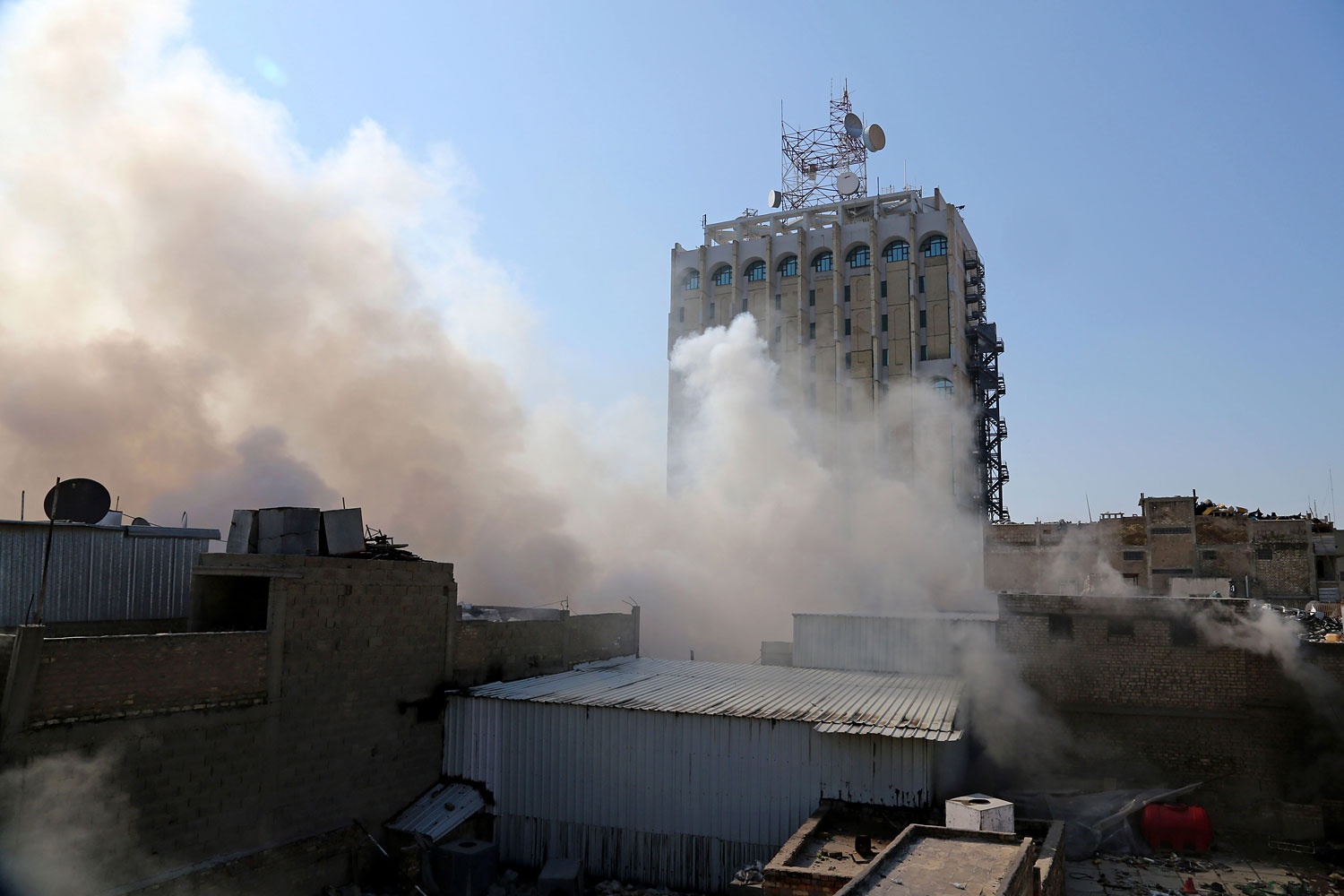
Four car bombs exploded in Baghdad on Wednesday, and two rockets were fired into the heavily fortified Green Zone. The targets were the Iraq government that the United States left behind two years ago – a regime dominated by the country’s Shiite Muslim majority and facing an insurgency of its own from al-Qaeda-linked extremists in the Sunni minority. But casual observers could be forgiven a certain disorienting familiarity.
Wednesday’s attacks, which killed at least 24 people, were only the latest in a horrendous barrage that included seven bombings on Monday, and claimed more than 1,000 lives in January alone. Photos showed streetscapes Americans came to see often during the eight-and-half-year occupation: boulevards boxed in by towering concrete Jersey barriers, strewn with blackened steel, and patrolled by dun-colored Humvees.
“Wow, it’s like Groundhog Day. What year is this?” the New Yorker’s Jon Lee Anderson asks in a Twitter post linking to the latest attacks.
What has changed? Not as much as hoped from a U.S. investment of well over $1 trillion. Iraqis no longer have an American occupation to resist, but combatants find ample fuel in the sectarianism that claimed 50,000 lives there from 2006 to 2008. The situation is aggravated on the one hand by the exclusionary performance of the Shiite-heavy government of Prime Minister Nouri al-Maliki’s, and the resurgence of Sunni extremism in the heavily sectarian civil war in neighboring Syria, which has spilled across the border. Last month Iraq’s deputy interior minister said al-Qaeda-linked forces now back in Fallujah, 44 miles west of the capital, held weapons “huge and advanced and frankly enough to occupy Baghdad.”
The capital contains institutions like the Foreign Ministry, which was among the targets Wednesday. But Shiite neighborhoods are frequently targeted as well in the once-cosmopolitan city. Iraq’s Interior Ministry says half of some 500 car bombs detonated in Iraq last year exploded in Baghdad. The website Iraqi Body Count calculates the city’s death rate from violent acts at eight per 1,000 residents per year. In the world as a whole over the last half century, year by year, that’s just about the rate per year of deaths from all causes, according to the United Nations. And in Iraq, the rate is once again rising.
More Must-Reads From TIME
- The 100 Most Influential People of 2024
- How Far Trump Would Go
- Scenes From Pro-Palestinian Encampments Across U.S. Universities
- Saving Seconds Is Better Than Hours
- Why Your Breakfast Should Start with a Vegetable
- 6 Compliments That Land Every Time
- Welcome to the Golden Age of Ryan Gosling
- Want Weekly Recs on What to Watch, Read, and More? Sign Up for Worth Your Time
Contact us at letters@time.com